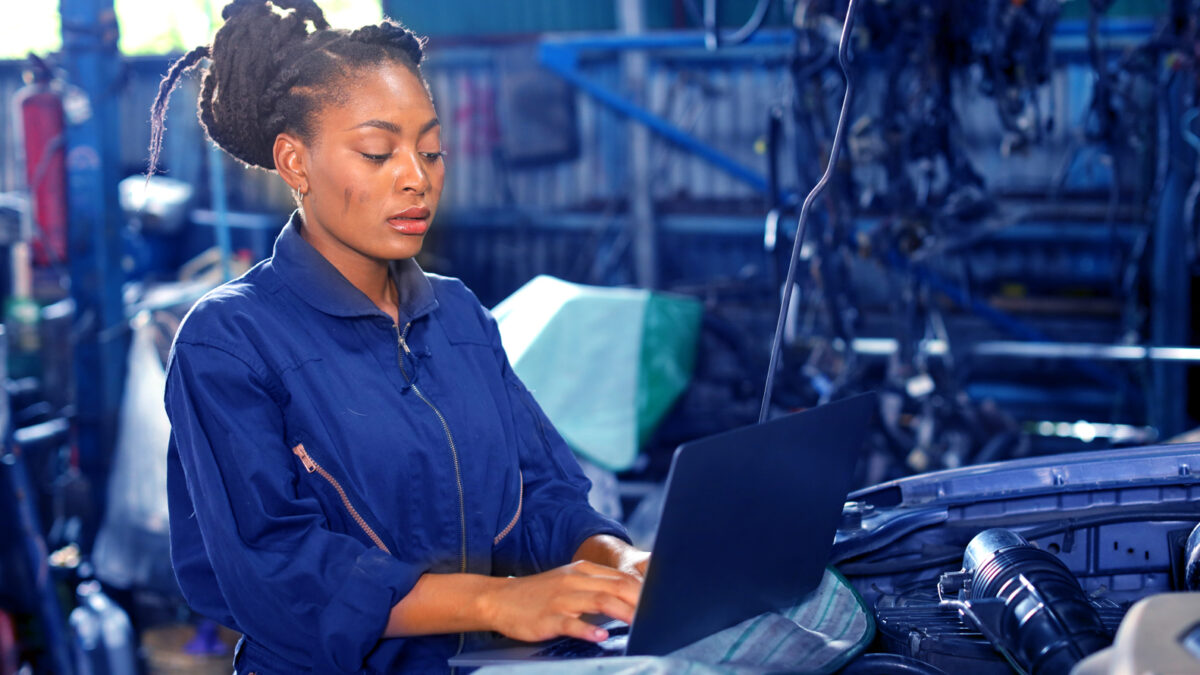Often, the ideas that permeate ProMat are the same topics that pop up in conversations throughout the year. Whether people are excited about a new technology or focusing on solving the same problem, the trends at ProMat often last beyond the four days of the conference.
After listening to speakers from all different tracks, it was clear that this year’s trends touched every part of the supply chain. Concerns that may have seemed specific to the warehouse extend to transportation and logistics. And vice versa.
We wanted to highlight the trends we noticed and report them back to our network. We want to hear your thoughts on these conversations. What do you think about these trends? How do they impact your daily lives? What solutions have you found to be the most helpful as you navigate the constant changes in the supply chain? Read what the ProMat speakers had to say and let us know what you think!
Here’s what we noticed during our time at ProMat 2025:
All eyes on AI
No matter where you looked throughout the McCormick Center, automation and AI were everywhere. Whether it was robots or new features on trusted software solutions, all eyes were on AI.
The conversation was not about whether companies should integrate AI into their supply chain, but how. One takeaway from Tuesday’s keynote speaker, Azeem Azhar, was for everyone from executives to warehouse workers to change how they imagined AI. It should not be thought of as a tool to replace human work or our contributions. Instead, it is a tool that allows us to make decisions faster, with a much deeper understanding of the context surrounding each choice.
Azhar gave an example of being able to synthesize research from hundreds of research papers in a matter of minutes. A task that would have taken days, or even months, was cut down exponentially. And he was able to make a better speech, with more relevant data for his audience.
By understanding a greater depth and breadth of data, companies can build barriers between their operations and potential disruptions. They build a more resilient supply chain that can pivot with any unexpected change.
Data maintenance is key
To make AI work, however, companies need to prioritize data maintenance. Any initiative, from efficiency to sustainability, requires clean, organized, relevant data that is as up-to-date as possible. Companies cannot make decisions on static reports, even if they were built within the last 24 hours.
Today’s supply chains operate in a dynamic environment. Only real-time data will suffice from now on. The data reflects this idea, as well. Blue Yonder’s Logan Kluth showed one study that reported 79% of companies saying they plan to increase investments in technology in the next year.
As businesses make these upgrades, they must be mindful of how the new technology connects with existing technology throughout their entire supply chain. To achieve true resiliency, end-to-end data consistency is best practice. Companies should find solutions and technology partners that integrate into existing technology with the ability to connect directly to any updates in the future.
Data maintenance is the only foundation on top of which innovation can succeed.
Workforce retention is a widespread concern
Companies don’t only have questions about tools of the supply chain. A large number of attendees expressed concern regarding their workforce. Some businesses wanted to know how to retain existing employees. Others needed better recruiting tactics. But everyone wanted to reduce the impact of labor shortages on their supply chain.
Unfortunately, the solutions don’t seem to be as cut and dry as data cleanliness. Each worker has different motivations for working, and as such, need different offerings from their company to stay in their role. However, there are ways companies can improve the hiring process to reduce turnover.
In one session, aptly titled “Reducing Workforce Turnout,” one speaker said that the supply chain is seeing stress levels similar to Covid right now. As a result, companies are starting to hire anyone, just to keep pace. In the short term, it puts a band-aid on the problem. But in the long-term, turnover costs companies more than it helps. The cost to recruit, interview, train and get employees up to speed often gets dispersed throughout different departments, so it goes unnoticed. But slowing down, hiring people who want to do the work and offering them the proper roles for their interests is a much better long-term strategy.
In an environment where everyone is telling teams to move faster, when it comes to workforce retention and hiring, it’s actually much better to slow down and make thoughtful decisions.
Partnerships drive profitability
Finally, a central theme throughout all sessions and keynotes was partnerships. The supply chain requires collaboration and partnership, internally and externally. Working directly with partners who are committed to innovation, transparency and agile practices is the best indicator for success.
The power of any technology a company invests in is important, to be sure. But, the strategic partnership can sometimes matter even more. Every business needs to know how their partners are thinking about the future. How they’re transitioning from legacy systems to more modern ones. And how they will ensure they stick to the modernization process.
The partners companies choose to help them reach their profitability goals are just as essential as the tools they use.
More from Blue Yonder’s ProMat 2025 experience
To read more about our time at ProMat, including an in-depth recap of Kluth’s entire session, head to our blog. We’ll be updating it with new insights and learnings all week!

